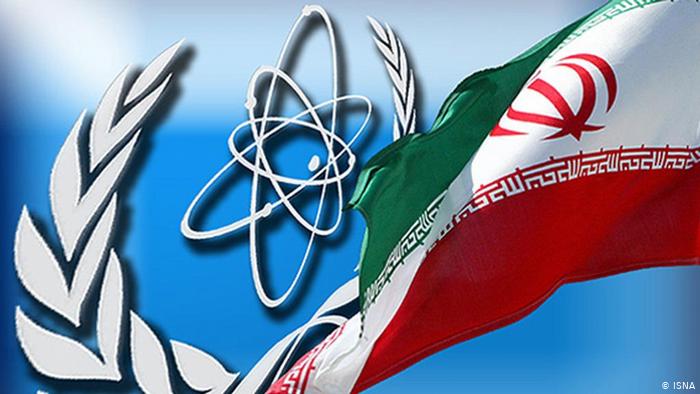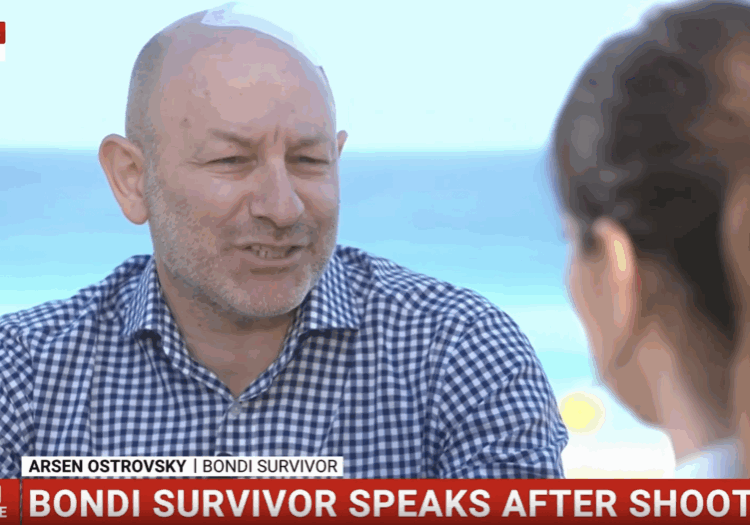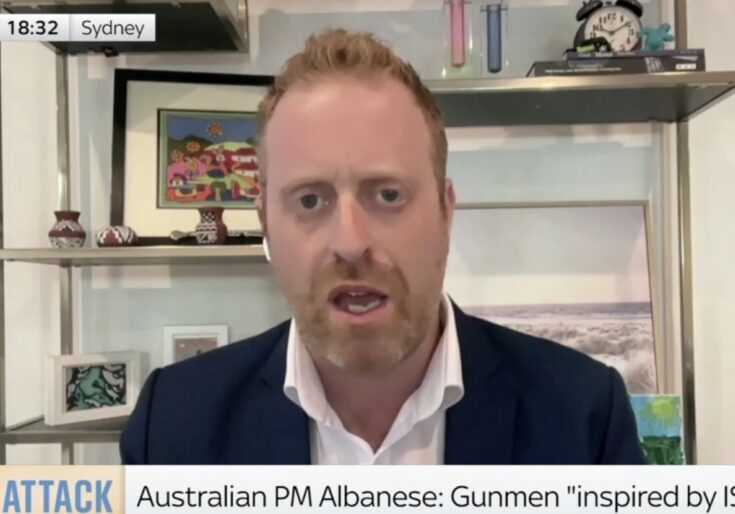FRESH AIR
The IAEA’s damning report card on Iran’s nuclear program
June 12, 2020 | AIJAC staff

On June 5 and 6, the International Atomic Energy Agency (IAEA) issued two periodical reports – one public and the other confidential – into Iran’s nuclear program.
The documents reveal systematically increasing violations by Iran of its commitments to the international community. Specifically, Teheran is now in breach of virtually all of its obligations as set out in the 2015 nuclear deal known as the Joint Comprehensive Plan of Action (JCPOA), and closer to the production of nuclear weapons than at any time since 2015.
Primary findings of the reports
1. Fissile material stockpiles
- As of May 2020, Iran had amassed more than 1.5 tonnes of uranium mass enriched to levels of up to 5%, made up mostly of uranium hexafluoride (UF6), the gas injected into centrifuges to produce enriched uranium.
- This is an increase of approximately 50% in stockpiles since February, and a ten-fold jump since May last year.
- Breaches of all JCPOA limits: Since February, as reported by the IAEA at the time, Teheran’s fissile material stockpiles are in breach of JCPOA limits with regards to both the quantity of enriched uranium held (Iran is supposed to be limited to 300kg) and enrichment levels (Iran is supposed to limit enrichment to 3.67% but much of the stockpile is enriched to 4.5%).
- Enough for one nuclear warhead (but not two): As of February, Iran had already crossed the 1-tonne threshold for amassing enough fissile material to create one nuclear warhead, if it was further enriched to create weapons-grade uranium. While it now has 50% more, it still does not have enough to produce two atomic warheads – mostly because 483 kg of its enriched uranium stores are enriched only up to 2% or less. However, on current trends, it is possible Iran will possess two warheads worth of enriched uranium in two or three months.
2. Enrichment capacities slightly higher
- Compared to February, Iran has recorded about a 5% increase in its uranium enrichment capacity, now amounting to approximately 7835 Separative Work Units (SWU) per year. SWUs are the standardised measure of the capacity to separate isotopes of uranium over time during enrichment processes.
- The improved capacity is a result of Teheran retrieving from storage a few dozen of its basic IR-1 type centrifuges and adding them into the already operating cascades of centrifuges at the Natanz and Fordow nuclear facilities.
3. Advanced centrifuges
- Violating JCPOA limitations on deploying more advanced centrifuges than the IR-1, Iran is now deploying a total of 553 advanced types of IR series centrifuges (including types 2, 2m, 4, 5, 6, 6s, 6sm, 7, 8, 8s, 8b, 9) in six lines at the Natanz Pilot Fuel Enrichment Plant.
- Advanced centrifuges turning operational: In operation, these centrifuges have moved beyond the test stage, and they have now produced 483.1 kilograms of low enriched uranium (up to 2%).
- Contribution to enrichment capacity: Together, the 553 advanced centrifuges are equivalent to 2,602 IR-1 centrifuges, with an estimated capacity 2342 SWU/year.
- In addition, production of carbon fibres for advanced centrifuge rotor tube continues at Natanz without IAEA monitoring, despite a requirement to have such efforts monitored by the IAEA since 2016.
4. Arak heavy water reactor
- Defying another JCPOA obligation, Iran has not made progress in reconfiguring the Arak (IR-40) heavy water reactor into a form which is less likely to contribute to nuclear weapons production. Teheran was supposed to redesign and rebuild the Arak reactor to produce far less plutonium, a fissile material that, like enriched uranium, can also be used to create nuclear warheads.
- Iran’s heavy water stocks reached 132.6 metric tons, slightly above the JCPOA limit of 130 tons already breached by Teheran in November 2019. Heavy water is a critical ingredient in the fusion process leading to a successful nuclear explosion, and in reactors producing plutonium.
5. Inspections in Iran
- The IAEA notes “with serious concern” that, despite being warned on the matter in February, Iran has continued to block access by IAEA inspectors to two nuclear sites that were part of its AMAD nuclear weapon project, which was ostensibly shut down in 2003 (though evidence suggests much of it was simply moved to other bodies). High-level visits to Teheran by senior IAEA officials to discuss the inspection requests ended with legalistic arguments and evasive manoeuvres by the Iranians. These arguments were rejected by the agency.
- The first site in question is the Lavisan-Shian site, razed and sanitised after its discovery in 2004. IAEA investigations have received no answers from Iran on work allegedly conducted at this location to produce a uranium metal disk used for making uranium deuteride, a critical component in the initiation of explosions in nuclear warheads.
- The exact location of the second site is not publicly known, but is reported to be near Teheran. It was supposed to be a “pilot uranium conversion” facility created as part of Iran’s AMAD nuclear weapons program. Processing and conversion of uranium ore, along with usage and storage of nuclear material, allegedly took place at the site. However, again, the Iranians tore down any related buildings on the site in 2004 in an apparent attempt to cover up evidence of this illegal activity.
- The IAEA reports also discuss a third site that they have concluded it is not worth trying to inspect for nuclear evidence because it has been methodically cleaned and razed to the ground. The site in question is most likely the one located a few kilometres north of Abadeh. According to material from the secret nuclear archive spirited out of Iran by Israeli intelligence agencies in 2018, the site was used for outdoor high explosive testing required for the initiation of a nuclear warhead as part of the AMAD project. Activity at the site was detected occasionally as late as 2018, and it was destroyed following its exposure by Israel in 2019.
- The IAEA expressed concern that “for almost a year, [Iran] has not engaged in substantive discussions to clarify Agency questions related to the possible undeclared nuclear material and nuclear-related activities in Iran […] This is adversely affecting the Agency’s ability to clarify and resolve the questions and thereby to provide credible assurance of the absence of undeclared nuclear material and activities at these locations in Iran.”
- With regard to the detection of uranium particles last year in the Turquz-Abad warehouse exposed by Israel (which the Iranians failed to declare as a nuclear site), the latest reports say Iran has supplied the IAEA with new information. This information has led inspectors to collect environmental samples at two declared Iranian sites in January 2020. However, analysis of those samples has yet to be completed due to technical difficulties during the COVID-19 pandemic.
Implications
1. Breakout time
The timeframe for Iran to ‘race’ to produce enough highly enriched fissile material for one nuclear bomb is now an estimated 3-3.5 months, slightly faster than in February.
2. A ‘safeguards crisis’
Beyond its open non-compliance with the JCPOA, Teheran’s tactics of delaying and preventing inspections of nuclear sites now constitute a breach of Iran’s various nuclear safeguard agreements with the IAEA, specifically the Additional Protocol to the Nuclear Non-Proliferation Treaty (NPT). This could potentially lead the IAEA Board of Governors to declare Teheran in “non-compliance” with its safeguard commitments, starting a process that could end with a referral to the UN Security Council for more punitive action against Iran.
3. Iran’s undeniable atomic bomb ambitions
The reports expose how Iran has aligned experimental advanced centrifuges in an array which is not commercially viable due to questions of efficiency, failure rates and costs. Such considerations however are less important in a project aimed at producing nuclear weapons.
4. The weapons embargo on Iran is next on the agenda
The reports give more support to the US position as it seeks to prevent the lifting of a UN Security Council ban on arms sales to Iran scheduled to be removed in October 2020 under the terms of the JCPOA. Removing the ban as Iran openly flouts its JCPOA obligations would effectively reward Iran for flagrant violations of its international law obligations and pursuit of nuclear weapons capabilities in violation of the NPT.
5. Undermining Iran’s complaints about the effects of sanctions for the COVID-19 pandemic
The IAEA reports make it clear that Teheran remains determined to push on with its expensive nuclear efforts at all cost, even as the coronavirus continues to ravage Iran. This seems to contradict arguments by the ruling Ayatollahs that economic sanctions have had a devastating impact on the Iranian economy that has severely hampered the regime’s ability to effectively fight the pandemic, and therefore sanctions must be lifted as a humanitarian obligation.
6. The JCPOA appears beyond repair
It is clear that the 2015 JCPOA nuclear deal cannot simply be reinstated, as some analysts claim, and as some politicians have urged during the US presidential election campaign. Not only has Iran been in breach of key JCPOA commitments from day one of the agreement, it has now made significant progress toward nuclear bomb capabilities over the last two years since openly violating the agreement’s enrichment restrictions. A simple return to the JCPOA, with its sunset clauses beginning to lift almost all restrictions on enrichment a bare three years from now, would all but guarantee full Iranian military nuclear capability in a very short period of time. A new agreement will also need to take a zero-trust approach towards Teheran given its breaches of the JCPOA and NPT Additional Protocol. This would mean extended and more intrusive verification procedures and an end to the sunset provisions in the JCPOA, which essentially licensed Iran becoming a nuclear power after 2025.
7. The IAEA is restoring its credibility as a trustworthy nuclear watchdog
The latest reports are the second round of IAEA reports on Iran issued under new IAEA Director-General Rafael Grossi. They appear detailed, professional and free from any evidence of being influenced by political pressure. This professional tone contrasts with some reports issued under the previous IAEA leadership which appeared to seek to soften, downplay and minimise Iran’s violations in order to protect the JCPOA. The conclusions in the public report are clear and direct in exposing both Iran’s elusive and deceitful behaviour vis-à-vis IAEA monitors and Teheran’s obligations to the international community. The report also appears to demonstrate that the IAEA is now diligently following up on information uncovered from Iran’s secret nuclear archive when it was seized by Israel from Teheran in 2018. This also contrasts with the agency’s apparently very reluctant and cautious approach to using information from the archives in the past.
RELATED ARTICLES

The Government’s actions still fall short: Joel Burnie on FDD Morning Brief

“The writing was on the wall for a number of years”: Colin Rubenstein on Channel 7 Weekend Sunrise





















